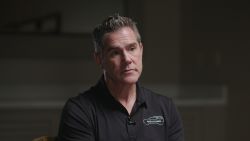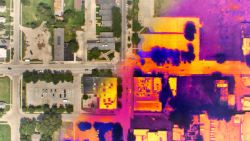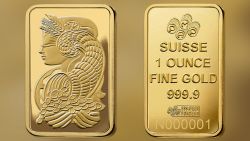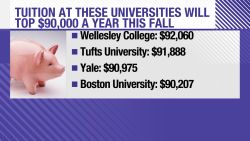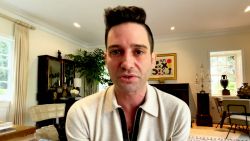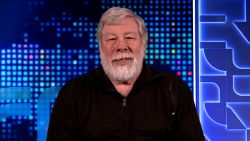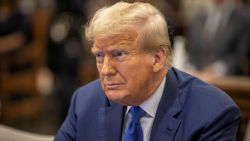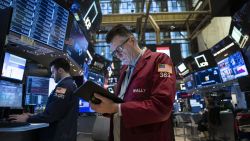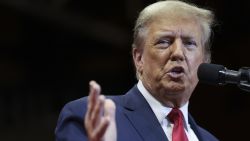Economists are sounding the alarm about a potential recession in the not-too-distant future. With an election year around the corner, the White House has tried to cast the Federal Reserve as a bogeyman.
As the US economy continued its lengthy expansion, the Fed raised rates nine times between late 2015 and the end of last year. Still, interest rates remain historically low. The Fed cut rates in July and is widely expected to cut rates again later this month.
But there is little evidence that the interest rates controlled by the Fed are the central problem ailing the US economy. It’s very cheap to borrow today. Companies are not complaining about access to credit.
They are complaining about tariffs.
President Donald Trump’s deepening trade war with China has exacerbated the economic slowdown rippling across the world. Now there’s evidence that slowdown has arrived on US shores, in large part because of the trade war. The risk is that it will morph into a self-inflicted recession, no matter what the Fed does.
“The trade war is a dagger in the body of the economy,” Mark Zandi, chief economist at Moody’s Analytics, told CNN Business. “The economy will not return to health until you take the dagger out, no matter how much antibiotics you pump in.”
Manufacturing sector shrinks. Companies blame tariffs
That dagger is plungingdeeper. On Sunday, the Trump administration imposed 15% tariffs on $112 billion of Chinese goods, prompting further retaliation from Beijing.
The escalating trade war is causing problems for the real economy.
Manufacturing activity in the United States contracted in August for the first time in three years, according to a report published on Tuesday by the Institute for Supply Management. “While business is strong, there is an undercurrent of fear and alarm regarding the trade wars and a potential recession,” one executive from a chemical products company surveyed by ISM said.
Another executive from a computer and electronics products maker said: “Tariffs continue to be a strain on the supply chain and the economy overall.”
Tellingly, new export orders plunged to the weakest level since April 2009 during the Great Recession.
“Manufacturing weakness has nothing to do with Fed policy. This is all self-inflicted. It’s the tariffs and the trade uncertainty,” said Peter Boockvar, chief investment officer at Bleakley Advisory Group.
Policy uncertainty spikes to three-year highs
The average US tariff on imports from China climbed to 21.2% on September 1, compared with just 3.1% before the trade war started, according to the Peterson Institute for International Economics.
Those tariffs are aimed at getting China to play fair on trade. China’s alleged theft of intellectual property and forced technology transfers have real costs. The Trump administration claimsChina wouldn’t even be talking about changing its behavior without the tariffs.
No matter the motivation, the tit-for-tat trade battle is casting a shadow over the economy.
“The trade war is unambiguously bad for growth,” Mike Pyle, global chief investment strategist at BlackRock, wrote in a note on Tuesday.
But it’s not just the direct costs from tariffs. Business spending is under pressure as confidence wanes and uncertainty rises. The US Economic Policy Uncertainty Index, which measures policy uncertainty by tracking news articles, surged to a three year-high in August.
“With recession signals already flashing, this kind of uncertainty could be dangerous as it inhibits consumption and capital spending,” Lisa Shalett, chief investment officer at Morgan Stanley Wealth Management, wrote in a note to clients on Tuesday.
Trump cites ‘badly run and weak companies’
Contrast that with what the White House has said.
Late last month, as financial markets plunged, Trump complained that the United States has a “very weak Fed.” He called Jerome Powell, his handpicked Fed chief, “a golfer who can’t putt.” Trump even questioned whether Powell is a “bigger enemy” to the United States than Chinese President Xi Jinping.
Trump later suggested it may be companies themselves that are at fault.
“Badly run and weak companies are smartly blaming these small Tariffs instead of themselves for bad management,” he tweeted last week.
Peter Navarro, Trump’s trade adviser, told CNN’s Richard Quest last week that “it’s a false narrative” to say the trade war is amplifying the global slowdown.
Instead, Navarro said the big headwind facing the United States is the Federal Reserve for “raising rates too far, too fast, which is hurting us directly through investment and indirectly through a currency effect.”
The Fed hiked interest rates four times last year, the most in any single year since 2006. The central bank was trying to prevent the economy from overheating after Trump and Congress took the unusual step of stimulating the already-healthy economy with massive tax cuts and a surge of government spending. Now, the economy is coming off the sugar high from that the tax cuts and spending increase.
Navarro also blamed weakness in Europe and urged the European Central Bank and Germany to stimulate the continent’s economy.
But Zandi, the Moody’s economist, called it “silliness” to say the Fed is chiefly responsible for the US slowdown.
“The administration wants to get bailed out. That’s why they are railing against the Fed,” Zandi said. “The Fed did exactly what they needed to do. But they didn’t think we would go to DefCon1 with China over trade.”
Christopher Smart, head of the Barings Investment Institute, said he doesn’t believe the Fed caused the slowdown. “It’s easy to Monday morning quarterback Fed decisions. But there was no economic textbook that would have told you to cut rates last year,” Smart said.
Recession odds on the rise
Others argue the Fed was too aggressive last year, and that’s not helping the economy today.
“I do agree that Fed policy moved into restrictive territory. There was no reason to raise rates that quickly,” said Lindsey Piegza, chief economist at Stifel, adding that the rate hikes risk “choking off the recovery.”
But Piegza also said that the trade war is “exacerbating some of the weakness” in the economy.
Meanwhile, cracks have already emerged in the frontlines of the trade war, with both the manufacturing and agriculture sectors in contraction.
The Trump administration has at times signaled concern about the trade war, especially as market volatility spiked. The White House has reached several cease-fire agreements with China, but none lasted.
Perhaps the latest warning signs will prompt the White House to try to reach another trade truce with China. If not, and Trump carries through on his threatened tariffs on China, Zandi warned of a greater than 50% chance of a recession before the end of 2020.
“If he ups the ante in any way, it’s much higher,” Zandi said.
The Fed is coming to the rescue. Will it matter?
Businesses are caught in the middle of the trade war. Last week, Best Buy (BBY) dimmed its sales guidance due in large part to the trade war.
“It is hard to predict how, at the macro level, consumers will react to higher prices resulting from tariffs,” Best Buy CEO Corie Barry, told analysts during a conference call.
The word “tariff” was mentioned 35 times during the earnings call. No one mentioned the Fed, interest rates, nor Powell’s golf game.
The Fed has signaled it is willing to come to the rescue with more rate cuts, if needed. Rate cuts could help on the margins by boosting the stock market, which in turn may lift confidence.
The problem, however, is that easy money won’t solve what really ails the economy. And the Fed is running low on ammo anyway.
“Monetary policy is no cure for a full-blown trade war. There is limited policy space to deal with a future downturn,” said BlackRock’s Pyle.
Powell echoed that point, saying in a speech last month that the Fed doesn’t have a playbook for how to deal with a trade war.
Boockvar said the Fed cutting rates will do “absolutely nothing to help growth” because the cost of capital is not an impediment.
“Getting rid of the tariffs would be the biggest stimulus right now,” he said.




